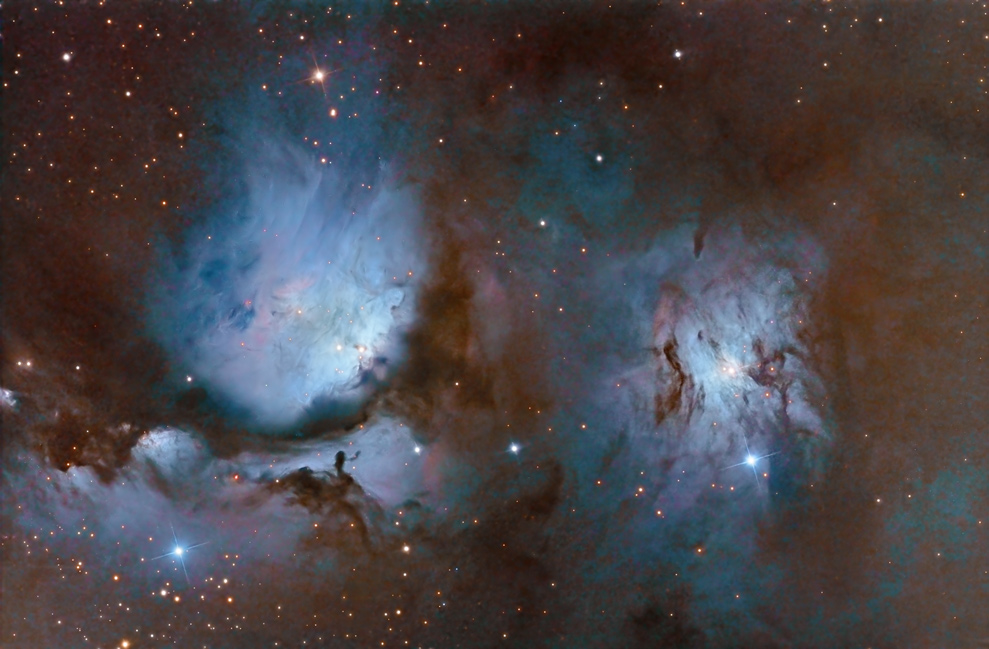Click here for higher-resolution versions: 1583x1037 (40%) 2572x1685 (65%) 3957x2592 (Full Resolution)

M78 is the brightest diffuse reflection nebula of a group of nebulae that include NGC 2064, NGC 2067, NGC 2071 and McNeil's Nebula (all of which are in this field; click through to see
labels). A reflection nebula is one that does not emit its own light, but merely reflects the light of bright stars nearby; because blue light gets scattered more than light on the red end of the spectrum
we see the blue light that has been scattered.
This group (along with the Great Orion Nebula, the
Horsehead Nebula and the Flame Nebula, and the rest of this field) belongs to the Orion Molecular Cloud Complex and is
about 1,600 light years distant from Earth. M78 is easily found in small telescopes as a hazy patch, and includes two magnitude 10 stars; these two stars are responsible for making the cloud of
dust in M78 visible by reflecting their light. This field is located about 2.5 degrees northeast of Alnitak, the eastern-most star of Orion's Belt.
Click on the image to get a version with some of the more important catalogued objects in the field labeled.
Copyright 2015-2016 Mark de Regt